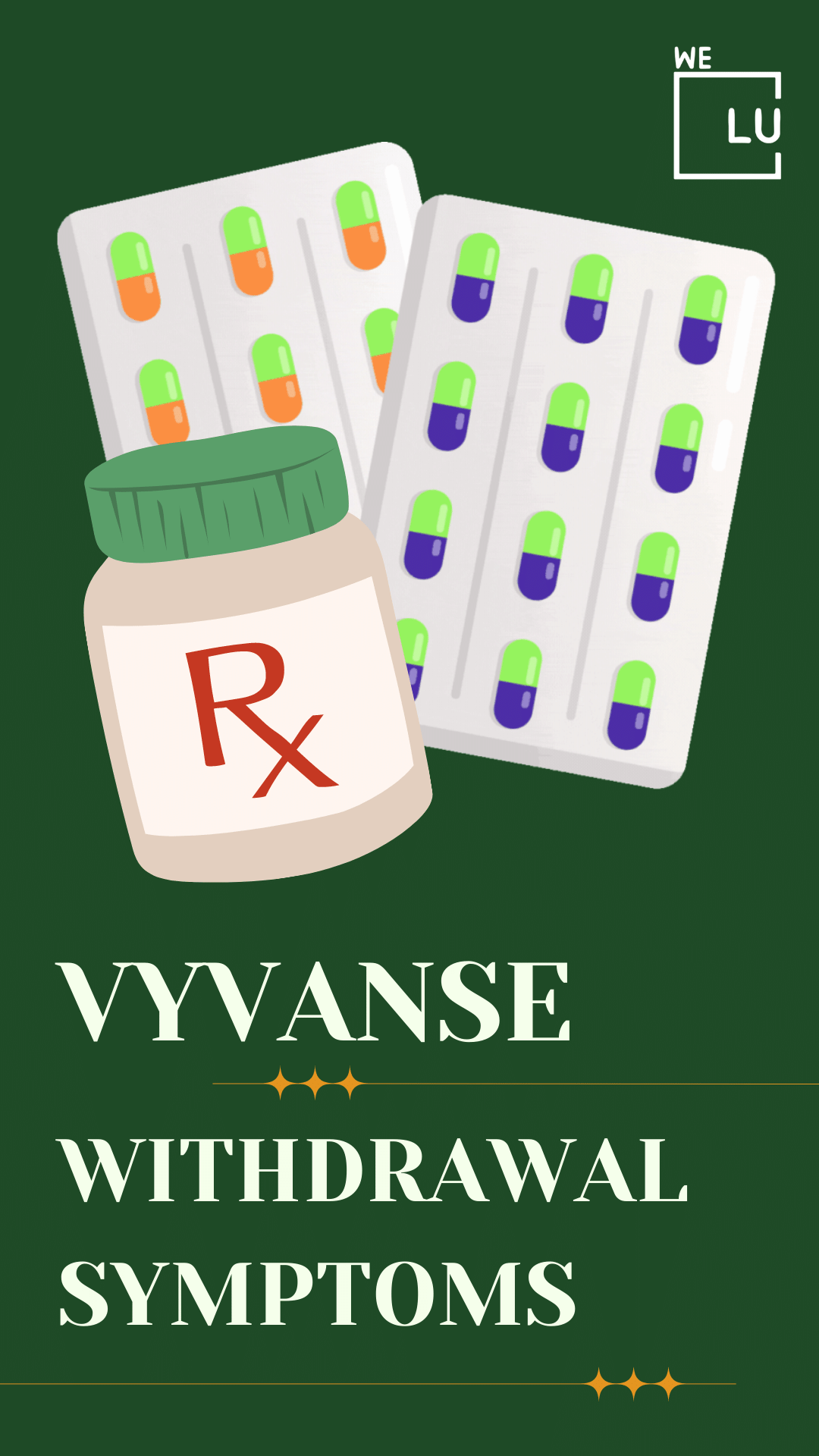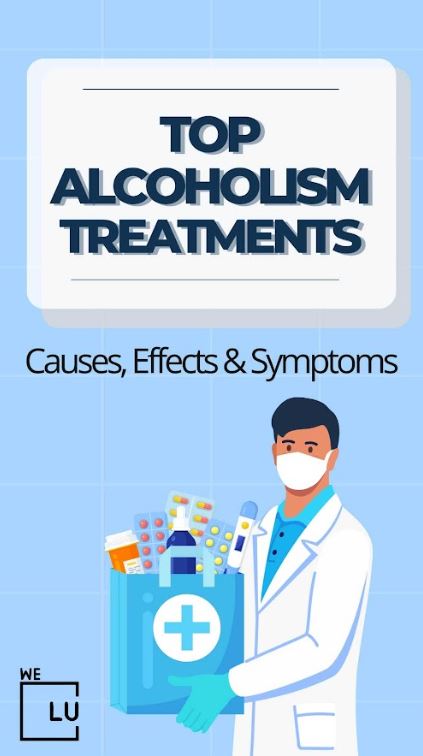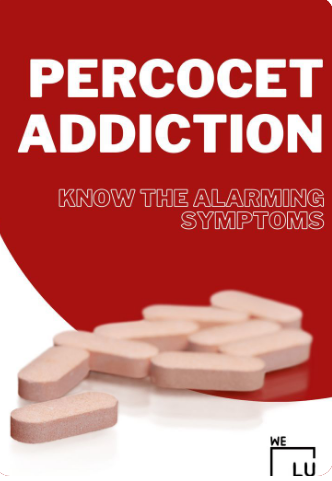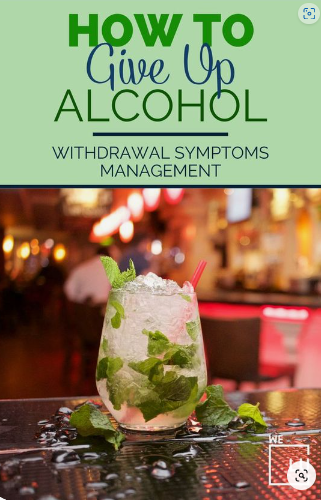Krokodil Zombie Drug
Discover the shocking truth about the dangerous Krokodil drug. The zombie drug is a popular devastating substance that causes addiction and horrifying flesh-eating effects. Krokodil (pronounced “crocodile”) is also known as Russian heroin. Krokodil drug homemade Desomorphine is chemically produced by combining codeine and organic solvents, mimicking the effects of heroin. Uncover the shocking truth behind this synthetic substance. Learn about the dangerously fatal health conditions it can lead to.
This guide provides an overview of the Krokodile drug, its effects, and its sources, drawing from reputable sources to educate and inform readers.
If you are struggling with substance abuse, turn to the We Level Up Treatment Center network for help. Our addiction specialists are here to guide, support, and provide the resources you need to restore your health and well-being. Get professional help today.
The Krokodil Drug
Krokodil (desomorphine) is a synthetic drug similar to heroin or morphine. It is made by mixing codeine with various chemicals and solvents such as gasoline, paint thinner, and hydrochloric acid. The Krokodil drug is injected as a highly toxic liquid, causing severe tissue damage and scaly, greenish-black skin resembling a crocodile. Hence the name “Krokodil drug,” also known as and spelled as Krokodile drug.
Krokodil Drug Definition
Krokodil Drug Definition
Krokodil, the “flesh-eating drug,” has been the subject of alarming news reports. Krokodile is a powerful opioid drug that originated in Russia. Its chemical name is Desomorphine, derived from codeine, a medication used to treat pain. However, Krokodil is produced illicitly using a crude and dangerous homemade process, typically involving household chemicals.
Desomorphine
The Krokodile drug is made from Desomorphine, a potent synthetic opioid that originated in Russia in the early 2000s. It combines codeine with various household chemicals, such as gasoline, paint thinner, red phosphorus (usually extracted from matchboxes), and Desomorphine. These readily available ingredients make it an appealing option for drug users seeking a cheap and easily accessible high.
Russian Origins
The name “Krokodil” (pronounced kroh-kuh-deel) derives from the Russian word for crocodile, as the drug causes severe damage to the skin, giving it a scaly, reptilian appearance. This necrotic effect occurs due to impurities and toxic substances during production. The Krokodile drug use can lead to open sores, gangrene, tissue damage, and rotting flesh.
krokodil Addiction
The Krokodile drug is highly addictive, and the effects can be devastating. Krokodil addicts often suffer from gangrene, abscesses, skin ulcers, and tissue damage, leading to amputations and other long-term health issues. Due to the manufacturing process and the addition of toxic substances, Krokodil users are also at risk of infections, organ damage, and even death.
The drug gained prominence due to its alarming side effects, earning its nickname “flesh-eating drug” as it can cause severe tissue damage and necrosis at the injection site. The chemicals used in its production are highly corrosive, leading to severe health complications and a rapid physical decline among users.
The Krokodil drug is illegal in most countries. Its use and production are associated with severe health risks and are considered dangerous and highly addictive.
Efforts to address Krokodile use involve a multi-faceted approach, including prevention, harm reduction, and treatment strategies. Public health campaigns aim to educate communities about the dangers of Krokodile, while harm reduction initiatives focus on providing clean needles, access to drug treatment programs, and essential healthcare services. Rehabilitation and recovery support systems are essential for individuals seeking to overcome Krokodil addiction.
If you or someone you know is struggling with substance abuse, seek help from healthcare professionals like We Level Up Treatment Centers. We specialize in addiction treatment and understand how vital treatment can be to restore your health. We can provide guidance, support, and resources to address addiction and improve your well-being.
Krokodil Drug Facts Chart
Krokodil Drug Facts
Krokodile (desomorphine) is a synthetic drug similar to heroin or morphine. It is made by mixing codeine with various chemicals and solvents such as gasoline, paint thinner, and hydrochloric acid. The Krokodil drug is injected as a highly toxic liquid, causing severe tissue damage and scaly, greenish-black skin resembling a crocodile. Hence the name “Krokodil.”
Krokodil Drug Facts Table
| Fact | Description |
|---|---|
| Definition | Krokodile is a cheap and highly addictive homemade drug that originated in Russia. It is derived from codeine and toxic chemicals such as gasoline or paint thinner. |
| Physical Appearance | Krokodile causes severe tissue damage due to its corrosive properties, resulting in visible skin discoloration, open sores, and a scaly appearance, resembling crocodile skin. |
| Health Effects | Krokodile can lead to necrotic tissue damage, gangrene, amputation, and even death. Users may experience collapsed veins, infections, blood poisoning, and severe health complications. |
| Addiction Potential | Krokodile is known for its high addiction potential, with users often experiencing a rapid and devastating physical and psychological dependence on the drug. |
| Short-Term Side Effects | Immediate side effects include euphoria, sedation, hallucinations, anxiety, memory loss, impaired judgment, and respiratory depression. |
| Long-Term Consequences | Long-term effects may include organ damage, neurological impairments, cognitive decline, chronic infections, mental health issues, and an increased risk of overdose. |
| Treatment Options | Various organizations and initiatives focus on raising awareness about the dangers of Krokodil, addressing drug abuse, and educating about its associated risks. |
| Prevention and Education Efforts | Various organizations and initiatives focus on raising awareness about the dangers of Krokodile, addressing drug abuse, and educating about its associated risks. |
| Legal Status | Krokodile is illegal in many countries due to its harmful effects and potential for abuse. |
Krokodil Drug Effects
The effects of Krokodil are often intense and occur rapidly. Users experience a short-lived high similar to heroin while also facing a higher risk of developing a strong physical dependence and addiction. The drug’s potency can lead to severe respiratory depression, increased vulnerability to infectious diseases, organ damage, and even death. Additionally, it is known for its potential for psychological and psychiatric symptoms, exacerbating mental health conditions in users.
Krokodil Drug Effects Table
Krokodil drug effects include the following:
| Krokodil Drug Effects | Description |
|---|---|
| Skin Ulceration and Necrosis | Krokodile causes severe damage to the skin, leading to open sores, scaly appearance, and tissue death. Necrotic wounds may result in gangrene, requiring amputation. |
| Toxicity and Organ Damage | The toxic chemicals used in Krokodile production can cause damage to internal organs, including the liver, kidneys, and lungs. Long-term use can lead to organ failure. |
| Increased Risk of Infections | Injection of Krokodile using contaminated equipment or unsterile techniques can result in bacterial infections, abscesses, and sepsis. Increased risk of blood-borne diseases like HIV and Hepatitis C. |
| Respiratory Depression | Krokodile is a potent opioid that can cause shallow breathing, respiratory distress, and potentially fatal respiratory depression. |
| Addiction and Dependence | Due to its illegal status, Krokodil use can lead to strained relationships, financial difficulties, job loss, and legal troubles. |
| Psychological and Psychiatric Effects | Users may experience mood swings, anxiety, depression, hallucinations, and cognitive impairments. Pre-existing mental health conditions can be exacerbated. |
| Social and Legal Consequences | Due to its illegal status, Krokodile use can lead to strained relationships, financial difficulties, job loss, and legal troubles. |
| Health Risks During Pregnancy | Pregnant individuals who use Krokodile are at a higher risk of miscarriage, premature birth, low birth weight, neonatal abstinence syndrome, and developmental issues. |
If you or someone you know is struggling with substance abuse, seeking help from healthcare professionals or support organizations specialized in addiction treatment like the We Level Up addiction treatment centers network is paramount. We can guide, detox, treat, and support you with the necessary resources to address addiction to Krokdil and other substances to improve your life.
The Drug Krokodil Alarming News Reports
New reports on the rise of the dangerous Krokodil drug highlight its alarming popularity, horrifying consequences of Krokodil addiction, and ongoing efforts to stop its production and distribution.
The Alarming Rise of the Drug Krokodil
Here are summaries of some prominent news reports on Krokodil and their sources. The below reputable news reports emphasize the urgent necessity for increased awareness, prevention measures, and intervention strategies to tackle a growing public health crisis.
Reports suggest that Krokodil use is more prevalent in some areas of Russia and Eastern Europe. However, cases of Krokodil use have been reported in other parts of the world, including the United States, prompting concerns about its spread.
Krokodil, also known as desomorphine, is a hazardous and addictive drug derived from codeine. Recent news reports have highlighted the alarming increase in Krokodil use across specific regions, with devastating consequences for those affected.
- “Russia’s Krokodil Epidemic” – VICE News (2013):
VICE News – “Russia’s Krokodil Epidemic” (https://www.youtube.com/watch?v=JsLrD7lKXzo). This report explores the emergence of Krokodil in Russia, highlighting its devastating effects on users. It features interviews with individuals who have used the drug and covers the alarming rise in Krokodil-related health issues. - “The Horrors of Krokodil: Russia’s Deadliest Drug” – The Guardian (2013):
This article discusses the spread of Krokodil in Russia and its destructive consequences. It shares stories of Krokodile drug’s devastating effects. - MedlinePlus – “Krokodil: What is Desomorphine?” – https://medlineplus.gov/ency/article/007480.htm
This source from MedlinePlus, a trusted health information website, provides a comprehensive overview of desomorphine, the chemical compound used to create Krokodil. It gives detailed information about its origins, how it is made, and the adverse effects associated with its use. - National Institute on Drug Abuse (NIDA) – “Desomorphine Drug Facts” – https://www.drugabuse.gov/publications/drugfacts/krokodil
The NIDA, a renowned research institution, offers an informative Drug Facts publication on Krokodil, focusing on its chemical composition, history, and evolving public health concern. It provides a balanced perspective and valuable insights into the drug’s impact on physical and mental health. - World Health Organization (WHO) – “Public Health Response to Krokodil Use” – https://www.who.int/substance_abuse/facts/krokodil/en/
The WHO resource enlightens readers about the public health response to Krokodil use and its associated harms. It discusses the challenges of tracking and identifying Krokodil use worldwide and provides evidence-based strategies for prevention, treatment, and harm reduction. - The Guardian – “Krokodil: The Drug That Eats Junkies” – https://www.theguardian.com/world/2013/sep/25/krokodil-horror-home-made-flesh-eating-drug
This article by The Guardian sheds light on the horrifying consequences of Krokodil use, showcasing first-hand accounts, medical professionals’ perspectives, and efforts to combat its spread. It vividly portrays the devastating impact the drug has on individuals and communities. - Centers for Disease Control and Prevention (CDC) – “Unintentional Consequences of Krokodil Use in the United States” – https://www.cdc.gov/mmwr/preview/mmwrhtml/mm6345a1.htm
This report by the CDC discusses the alarming emergence of Krokodil use in the United States, presenting data on associated health risks, treatment challenges, and prevention measures. It highlights the urgency of addressing this issue to prevent further harm.
Please note that the sources provided here are a selection of reputable references on the topic. Exploring various sources and consulting medical professionals for comprehensive and up-to-date information is always advisable.
While there have been alarming news reports about the drug Krokodil, it’s important to note that these reports are often based on individual cases and may not reflect the overall prevalence of the drug.
What Is Krokodil Drug?
The narcotic Krokodil drug is a semi-synthetic drug used as a cheap alternative to heroin. It is commonly used over the territory of the former USSR (Russia, Ukraine, Armenia, and others). [1]
Unfortunately, relatively little is understood about the physical effects of krokodil. “Krokodile” has recently been featured in news reports alleging its presence in parts of the United States [2]. The Krokodil drug gets its name from the scaly, gray-green dead skin that appears at the injection site.
The flesh damaged by krokodile becomes gangrenous, and, in some cases, limb amputation has been required to save a user’s life. Krokodil is a Schedule I substance in the U.S., indicating high abuse potential and no accepted medicinal use.
Devastating Krokodil Drug Effects
Krokodile, also known as desomorphine, is reported to have intense, short-term pain-relieving effects similar to heroin. However, Krokodile is reported to be much more potent than traditional opiates and is also associated with severe physical and psychological side effects. Severe Krokodil Drug effects include:
- Rotting Skin: The drug causes severe tissue damage and skin rotting, leading to tissue and bone infections, abscesses, and gangrene. This effect has led to the drug’s nickname, “Flesh-eating drug.”
- Organ Damage: Krokodil can damage internal organs such as the kidneys, liver, and heart, as well as cause problems in the nervous system, including strokes, seizures, and other brain-related conditions.
- Mental Health Issues: Krokodil is associated with several psychological side effects, including depression, anxiety, and confusion. Users may also experience psychotic symptoms such as hallucinations and delusions.
- Nerve Damage: Krokodil can cause severe nerve damage, leading to chronic pain, seizures, and stroke.
- Addiction and Withdrawal: Like other opioids, Krokodil is highly addictive and is associated with severe withdrawal symptoms. Withdrawal symptoms of Krokodil include nausea, vomiting, tremors, muscle pain, and anxiety.
- Infectious Diseases: Krokodil use can increase the risk of infectious diseases such as HIV, Hepatitis C, and other infectious diseases due to dirty needles or other drug paraphernalia.
Krokodil drug’s effects are associated with significant medical and social withdrawal, which is why the drug is banned in most parts of the world. Krokodil drug abuse is dangerous. Seeking help from a qualified health professional is the best way to overcome Krokodil addiction and prevent potential side effects from Krokodil abuse.
Krokodil Confessions
“Krokodil confessions” refer to personal accounts or stories shared by individuals who have used or been affected by the drug Krokodil. These confessions typically involve firsthand experiences, insights, and reflections on the physical, psychological, and social consequences of using Krokodil.
Krokodil Confessions
What Are Krokodil Confessions?
Krokodil’s confessions witness the harrowing realities of addiction and the devastating effects of this hazardous drug. These confessions often describe the rapid physical deterioration of the body, the intense cravings and withdrawal symptoms experienced, the impact on personal relationships and social functioning, and the overall struggle to escape the grip of addiction.
These firsthand accounts may serve as cautionary tales, shedding light on the dangers of Krokodile use and a reminder of the importance of prevention, treatment, and support for individuals affected by substance abuse.
Krokodil Confessions Stories
Some Krokodile confessions stories encompass the struggles with Krokodil addiction. Here are a few Krokodile confessions examples:
- The Descent into Hell Krokodil Confession (by unknown):
- A Krokodile addict shares their journey from occasional drug use to regular Krokodil use and the stark and rapid physical deterioration they experienced.
- They discuss the toll it took on their physical appearance as wounds and ulcers developed, causing disfigurement and pain.
- They reflect on the desperation that led them to use such a dangerous substance and the constant struggle to escape the cycle of addiction.
2. The Destruction of Relationships Krokodil Confession (by unknown):
- A Krokodil addict admits how their Krokodil addiction strained their relationships with friends and family.
- They describe the horrific pain and disappointment they caused their loved ones and the lies and deception they used to hide their addiction.
- They express remorse for the damage but hope for healing and rebuilding trust with their loved ones.
3. Road to Recovery Krokodil Confession (by unknown):
- A Krokodil addict shares their story of hitting rock bottom, describing the wake-up call that made them realize they needed to seek help for their Krokodil addiction.
- They discuss the withdrawal challenges and the difficult journey toward sobriety, including relapses and setbacks.
- They offer encouragement to others struggling and emphasize the importance of seeking professional assistance and support groups.
Here are a few more powerful Krokodil confession stories that explore different aspects of the drug’s impact:
- The Lost Years Krokodil Confession (by unknown):
- A Krokodil addict recounts their years-long battle with Krokodil addiction, describing how their life spiraled out of control.
- They discuss the toll on their education, career, and personal aspirations as they prioritized the drug above all else.
- They express regret and sadness for the lost time and opportunities missed but also highlight their determination to rebuild their lives.
5. The Loneliness of Addiction Krokodil Confession (by unknown):
- A Krokodil addict shares the isolation they felt while addicted to Krokodil, as their relationships deteriorated and they withdrew from social activities.
- They reflect on the deep shame and guilt that accompanied their addiction, often leading to further drug use to cope with these emotions.
- They express the importance of reaching out for help and connecting with supportive individuals who understand their struggles.
6. From Darkness to Light Krokodil Confession (by unknown):
- A Krokodil addict shares their story of overcoming Krokodil addiction and finding hope and recovery.
- They describe the process of seeking treatment, the challenges they faced during rehabilitation, and the ongoing efforts to maintain sobriety.
- They offer advice and encouragement to those still in addiction, emphasizing that determination and support make recovery possible.
Krokodil confessions provide insight into the experiences and struggles of individuals affected by Krokodil addiction. Real stories are deeply personal and unique, reflecting the lived experiences of those who have gone through addiction and recovery. Approach Krokodil’s confession stories with empathy and understanding. If you or someone you know is struggling with addiction, seeking professional help and support is crucial.
Share your Krokodil confession story. If you need help, contact the We Level Up treatment centers for the highest level of care and get your life back.
Skip To:
Link To:

Get Your Life Back
Find Hope & Recovery. Get Safe Comfortable Detox, Addiction Rehab & Mental Health Dual Diagnosis High-Quality Care at the We Level Up Treatment Centers Network.
Hotline (877) 378-4154Krokodil Drug Effects Warnings
Krokodile is a highly toxic, corrosive, and destructive drug with severe consequences for users’ physical, mental, and emotional well-being. Seeking prompt medical attention for users at risk of using this drug is crucial. Proper treatment and support will help them overcome their addiction and lead a healthy, fulfilling life.
Desomorphine (dihydrodesoxymorphine) is an injectable opioid derivative of codeine. On the street and online, the drug is known as:
- Krokodil or Krokodile drug
- Crocodile
- Croc
- Krok or the drug Krokodil
- Russian Magic
- Poor Man’s Heroin
Harmful Effects Of Krokodil Drug
Desomorphine is about ten times more potent than morphine and more potent than heroin in its pure form. The drug’s onset is quick, but its action is short, leading to numerous administrations and a heightened risk of developing physical dependence.
Krokodile is engaging to those endeavoring a euphoric high because it is cheap, nearly easy to make or obtain, produces a high similar to that of heroin, and delivers powerful sedative and pain-relieving effects in the user. In addition, krokodil has a swift onset of about 2-3 minutes and lasts about 2 hours.
The drug, while cheap, produces a relatively short high, and various media sources have covered stories about addicted individuals who need to regularly administer the medication to maintain their high and avoid withdrawal. [3]
Users are stated to be able to make krokodile in roughly 45 minutes with codeine and minimal tools. Users attempting to create desomorphine often combine toxic ingredients like hydrochloric acid, household cleaners, and gasoline with codeine. They may also seldom add cigarette ash to balance the pH.
Krokodil Drug’s Effects Can Be Drastic
Injection of the drug can be incredibly harmful and cause:
- Skin Infections
- Soft-Tissue Infections
- Thrombophlebitis: Inflammation of the veins
- Skin Ulceration
- Gangrene
- Necrosis: Death of living tissue
Get Help. Get Better. Get Your Life Back.
Searching for Accredited Drug & Alcohol Rehab Centers Near You? Or Mental Health Support?
Even if you have failed previously, relapsed, or are in a difficult crisis, we stand ready to support you. Our trusted behavioral health specialists will not give up on you. Call us when you feel ready or want someone to speak to about therapy alternatives to change your life. Even if we cannot assist you, we will lead you wherever you can get support. There is no obligation. Call our hotline today.
FREE Addiction Hotline – Call 24/7(Krokodile) Krokodil Drug Facts
Also Known As Desomorphine
What is Krokodil? Krokodil is a hazardous and illegal drug, and its use can lead to severe and potentially irreversible damage to the body and mind. The drug often causes rapid deterioration of the user’s physical health, with severe and painful side effects. The drug is highly addictive, and the withdrawal symptoms associated with the drug are often severe.
How is Krokodil Made?
What is Krokodile made of? Krokodile is made from codeine, lighter fluid, iodine, red phosphorus, hydrochloric acid, and other household chemicals. The drug got its name because of the greenish-black scale-like appearance of the user’s skin once the tissue starts to die off. The drug is often made and sold on the black market by unlicensed and unregulated people, making it extremely difficult to know the composition or potency of the substance.
Krokodil drug ingredients
Krokodile is a synthetic drug created by mixing codeine with other household chemicals. While the precise composition of Krokodil can vary, it typically contains a mix of the following ingredients:
- Codeine: codeine is an opioid pain medication that is derived initially from morphine.
- Hydrochloric acid is a highly corrosive and volatile chemical used in industrial cleaning agents.
- Iodine: Iodine is a substance commonly used in antiseptics or disinfectants.
- Red phosphorus is a highly combustible and reactive substance often used in producing matches, fireworks, and other pyrotechnics.
- Lighter fluid: This can contain several other chemicals, including butane, propane, and other flammable substances.
Manufacturing Krokodile usually involves mixing all these ingredients in a cooker-like apparatus, using a heat source for cooking down the mixture, and then extracting the final product. This manufacturing process is hazardous and can often lead to severe chemical burns or infections among its users.
Krokodile is an illegal drug, and its use is highly discouraged. The mixture of chemicals used to create Krokodil is highly corrosive and toxic. Its use can lead to severe side effects, including skin and tissue damage, internal organ damage, and the development of various mental health conditions. If you or anyone you know is struggling with Krokodil drug addiction, seeking professional help and support as soon as possible is essential to minimize the potential harm caused by drug abuse.
Krokodil Availability
Due to its many harmful effects, most countries outlaw the use or sale of Krokodile. Take preventative measures such as education, awareness, and addiction treatment. By prioritizing prevention, intervention, and treatment support for individuals struggling with drug addiction, we can help minimize the harm caused by Krokodile and other dangerous substances worldwide.
Krokodile Dangers
Krokodile is a hazardous drug, causing severe health consequences and long-term effects. It is essential to note that Krokodil is illegal and should never be taken, as the drug can cause immediate severe physical and psychological harm. Anyone addicted to opioids, heroin, or codeine should seek help and support from a qualified health professional and participate in addiction treatment programs to minimize harm, improve health outcomes, and improve quality of life.
Krokodil Side Effects
Krokodile is a synthetic drug that can cause severe and potentially irreversible bodily and cognitive damage. The drug has numerous side effects, some of which can be life-threatening. Here are some common side effects of Krokodil:
- Skin and Tissue damage: One of Krokodil’s most notable and alarming side effects is skin and tissue damage. The drug destroys the skin and underlying tissue, leading to flesh-eating and gangrene. This damage can be irreversible and cause permanent scarring.
- Organ damage: Krokodil can cause significant damage to internal organs such as the kidneys, liver, and heart, which can be life-threatening.
- Mental health issues: Krokodil use can also lead to the development of various psychological and psychiatric conditions such as anxiety, depression, and psychosis.
- Nerve damage: Krokodil can cause severe nerve damage, leading to chronic pain, seizures, and stroke.
- Addiction: Krokodil is a highly addictive drug, and users can develop an addiction quickly.
- Withdrawal: Withdrawal symptoms from Krokodil can be severe and sometimes fatal. Krokodil withdrawal symptoms can include restlessness, muscle and bone pain, and anxiety.
Using Krokodil is illegal and very dangerous. Anyone who has used the drug and is experiencing side effects should seek medical help immediately. Treatment for Krokodil addiction and its associated side effects should only be undertaken by trained medical professionals.
Desomorphine Krokodil Origins
The drug is named after its effects, which cause the skin to become green, scaly, and bumpy, resembling a crocodile. It is also known as Desomorphine in the pharmaceutical name. The drug gained notoriety in Russia in the early 2000s and quickly spread to other regions worldwide.
Krokodil High
When abused, Krokodile produces an intense, short-lived high similar to heroin. However, the drug is much more potent and more destructive to the body due to the chemical ingredients used to manufacture it. The drug destroys tissues and can cause severe internal organ damage, leading to life-threatening conditions.
Krokodil Legal Status
The production and use of Krokodile is illegal in most countries and is classified as a Schedule I controlled substance in many legislations. Due to its harmful and toxic nature, any exposure to Krokodil should be viewed as a medical emergency, and immediate medical attention should be sought to prevent dangerous health consequences.
Schizoid Personality Disorder Specialists
- Clinical Psychologist: uses talk therapy as the primary treatment for mental disorders.
- Psychiatrist: uses medication as the primary treatment for mental disorders.
- Primary Care Provider (PCP): disease prevention, diagnosis, and treatment.
Krokodile drug news reports and headlines
- “The Deadly Resurgence of Krokodile: Flesh-Eating Drug Spreads to New Areas”:
This report highlights the alarming reemergence of Krokodil and its expansion into new geographic regions, raising concerns about its destructive effects. - “Health Officials Warn of Krokodile’s Alarming Rise in Popularity”:
Health officials expressed concern over the increasing popularity of Krokodil, emphasizing its dangerous nature and urging public awareness and preventive measures. - “Krokodile: The Horrifying Drug That’s Gaining Traction in the United States”:
This report sheds light on the growing presence of Krokodil in the United States, highlighting the shocking consequences associated with its use. - “New Reports Highlight the Devastating Effects of Krokodile Addiction”:
Recent reports emphasize the destructive impact of Krokodil addiction, illustrating the severe health consequences and the urgent need for intervention and support. - “Law Enforcement Agencies Crack Down on Krokodile Production and Distribution Rings”:
Law enforcement agencies intensify actions against the production and distribution of Krokodil, aiming to disrupt the illicit trade and reduce its availability.
These news reports collectively highlight the resurgence of Krokodile, its alarming popularity, the devastating effects of addiction, and the efforts being made to combat its production and distribution. They shed light on the urgent need for awareness, prevention, and intervention strategies to address this public health crisis.
Krokodil Drug Dangers
There are several reasons why Krokodil is so dangerous. First, the chemicals used to make it are highly toxic and corrosive, causing severe tissue damage and necrosis. Second, the drug is often contaminated with other toxic chemicals, making it even more dangerous. Finally, Krokodil is highly addictive, and users often cannot stop using the drug despite the severe physical harm it causes.
Krokodil is a significant public health concern, and anyone who has used this drug should seek medical attention immediately.
Krokodil Overdose Risks
The risk of overdosing on krokodil is also very high. The lethal dose of krokodil is much lower than that of other opiates. In contrast, frequent drug use at high doses can cause heart failure, brain damage, and even death. Overdose symptoms include trouble breathing, loss of consciousness, seizures, and hallucinations.
Krokodil Addiction
Krokodil drug active ingredient, desomorphine, is a highly dangerous, addictive, and destructive drug used mainly in Russia and Eastern Europe.
It is sold on the black market as a cheap alternative to heroin. The drug is typically injected, often causing abscesses, gangrene, and other life-threatening health problems.
Krokodil Addiction Treatment
Treatment for Krokodil addiction typically involves a combination of medication, counseling, and support services to help individuals quit using the drug and recover their physical and mental health.
When treating Krokodil addiction, it is necessary to address the underlying causes and any other co-occurring mental health disorders, such as depression or anxiety. Treatment for Krokodil addiction usually starts with detoxification to safely eliminate the drug from the body. This process is crucial in managing withdrawal symptoms during drug cessation.
After detoxification, the patient often receives medication-assisted treatment to help them manage their addiction and cravings. Behavioral therapies, such as Cognitive Behavioral Therapy (CBT), are another standard method of Krokodil addiction treatment. These therapies seek to help the patient develop healthier coping and life skills, relapse prevention strategies, and improve their overall well-being, mental health, and quality of life.
Krokodil Drug – A Zombie Drug
Krokodile has been called a “zombie drug” by the media. Most descriptions of drug use by the media have shown addicted individuals with gangrene or dead patches of skin on their bodies.

You may question why anyone would use such a deadly drug with many hideous side effects. But, unfortunately, from a drug addict’s point of view, things are not so simple. There are already over a million Krokodil users in Russia. People use krokodile because it gives the same effects as heroin yet costs around a tenth of the price (4). So, for an addict who could find that money is one of the most significant obstacles to their drug habit, krokodile seems like the perfect option.
The other thing to acknowledge is that addiction is a disease itself. Users who are affected by a substance slowly build up a tolerance to its effects. This means they must take larger doses to accomplish the same buzz. Unfortunately, this often leads people from less severe drugs to more hazardous substances such as cocaine and heroin. For instance, a heroin user who builds up a tolerance can turn to Krokodil, three times more potent than heroin.
Treating Krokodil Addicts
Because of the severity of the side effects, Krokodil symptoms can be challenging to treat. Medication may be needed to combat infections or gangrene caused by the user’s open wounds and exposed flesh. In addition, badly affected limbs may need to be amputated.
Once a Krokodil addict has ceased their Krokodil addiction, a severe feat requiring specialist professional Krokodil addiction treatment, they may need surgery to repair their body. For instance, exposed bones, open muscles, and missing skin may need surgery to improve and heal, along with skin grafts to cover the afflicted areas.
Popular Krokodil Drug Effects FAQs
-
What are krokodil drug ingredients?
Krokodil combines codeine, lighter fluid, iodine, red phosphorus, hydrochloric acid, and other household chemicals. The drug got its name because of the greenish-black scale-like appearance of the user’s skin once the tissue starts to die off. The drug is often made and sold on the black market by unlicensed and unregulated people, making it extremely difficult to know the composition or potency of the substance.
-
What are krokodil drugs side effects?
Krokodil is a synthetic drug that can cause severe and potentially irreversible bodily and mental damage. The drug has numerous side effects, some of which can be life-threatening. Krokodil drug side effects
-
What is the drug Krokodil?
Krokodil is a synthetic drug chemically similar to morphine, heroin, and other opioids. The drug combines codeine and other toxic and corrosive chemicals, such as hydrochloric acid, iodine, and red phosphorus. Unlicensed and unregulated people often make and sell the drug on the black market.
Comfortable Facilities & Amenities
High-Quality Addiction & Mental Health Rehabilitation Treatment
Rehab Centers TourRenowned Addiction Centers. Serene Private Facilities. Inpatient rehab programs vary.
Addiction Helpline (877) 378-4154Proven recovery success experience, backed by a Team w/ History of:
15+
Years of Unified Experience
100s
5-Star Reviews Across Our Centers
10K
Recovery Success Stories Across Our Network
- Low Patient to Therapist Ratio
- Onsite Medical Detox Center
- Comprehensive Dual-Diagnosis Treatment
- Complimentary Family & Alumni Programs
- Coaching, Recovery & Personal Development Events
Krokodil Drug Withdrawal Treatment At We Level Up New Jersey
If you are addicted to drugs such as krokodil, your first step in recovery should be medical detox in a safe and medically supervised setting. The We Level Up New Jersey detox center medically assists clients in clearing their systems of addictive substances, such as krokodil drugs.
For anyone who suffers from addiction, we know that just the thought of having to stop using can cause severe mental distress. The medical detox center will help you manage the medical detox process. In addition, a comprehensive team prescribing medications can alleviate your withdrawal pains while monitoring your health 24 hours. Thus, assuring both your safety and comfort.
Once detox is complete, a new doorway in treatment opens up, referred to as a residential level of care. Here, our residential care program slowly and effectively introduces the individual into an atmosphere of therapeutic growth, marked by Master’s level therapists, clinicians, group counselors, psychiatrists, and a community of like-minded individuals with the same aim: to attain sobriety and live a great life.

World-class, Accredited, 5-Star Reviewed, Effective Addiction & Mental Health Programs. Complete Behavioral Health Inpatient Rehab, Detox plus Co-occuring Disorders Therapy.
CALL (877) 378-4154End the Addiction Pain. End the Emotional Rollercoaster. Get Your Life Back. Start Drug, Alcohol & Dual Diagnosis Mental Health Treatment Now. Get Free No-obligation Guidance by Substance Abuse Specialists Who Understand Addiction & Mental Health Recovery & Know How to Help.
We Level Up Dual Diagnosis Treatment Center In New Jersey
Some of the many modalities applied and practiced within our residential treatment facility are:
- Cognitive Behavioral Therapy
- 12-Step Groups
- Group Therapy
- Biofeedback
- Alumni Support
- Stabilization
- Holistic Therapy
Moreover, here at We Level Up NJ Addiction Treatment, the needs of each patient are specific and personalized, as we aim to provide comprehensive support for mental health, addiction, and dual diagnosis treatment.
Clients in our residential therapy programs will live comfortably within the facility during this crucial and fragile time. Indeed, this supportive environment is designed to give clients 24-hour care for sobriety, removing temptations for relapse and applying an air of recovery into every component of the treatment timeline, including krokodil drug addiction treatment. At We Level Up NJ, clients living in a supportive community, especially during their early recovery process, can genuinely focus on what matters most: their recovery.
Call today to speak with one of our treatment specialists if you have trouble with Krokodil drug addiction. Our counselors know what you are going through and will answer any of your questions.
Experience Transformative Recovery at the We Level Up Treatment Center.
See our authentic success stories. Get inspired. Get the help you deserve.



Start a New Life
Begin with a free call to an addiction & behavioral health treatment advisor. Learn more about our dual-diagnosis programs. The We Level Up treatment center network delivers various recovery programs at each treatment facility. Call to learn more.
- Personalized Care
- Caring Accountable Staff
- Comfortable Amenities
- Licensed & Accredited
- Renowned w/ 5-Star Reviews
We’ll Call You
Sources:
[1] “Krokodil drug” – Related osteonecrosis of midface: A case series – National Center for Biotechnology Information
[2] “Krokodile” – National Institute on Drug Abuse
[3] Krokodil Drug Addiction – We Level Up – Krokodil Drug Trend – We Level Up FL
US DEA Office of Diversion Control. Desomorphine. Available at: http://www.deadiversion.usdoj.gov/drug_chem_info/desomorphine.pdf





